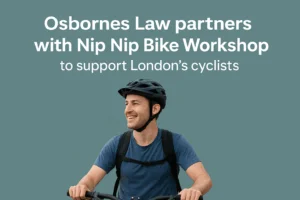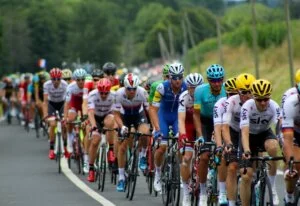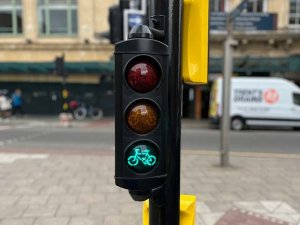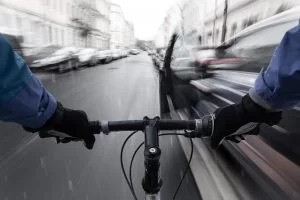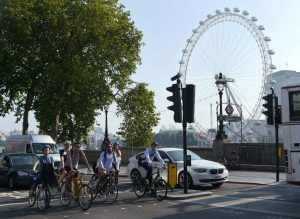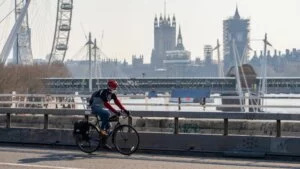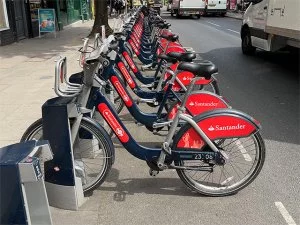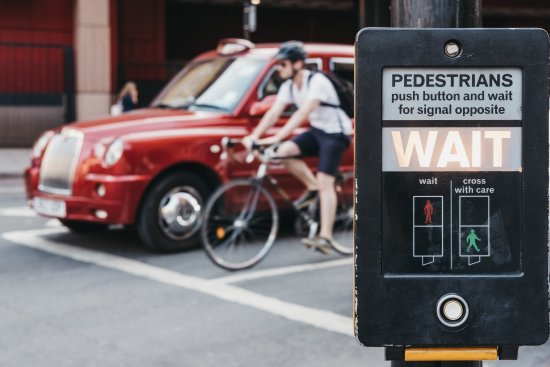New Laws to Tackle Intimidatory Driving & Cyclist Safety

Contact
Table of Contents
The government is considering a new set of road safety laws aimed at protecting cyclists and other vulnerable road users. Among the proposed changes is a new offence called “intimidatory driving”, which targets motorists who dangerously pass too close to cyclists. Additional proposals would see fines for “car dooring” and for drivers who stop in cycle boxes at traffic lights.
What is the proposed new offence of intimidatory driving?
“Intimidatory driving” refers to behaviour where drivers pass cyclists without leaving a safe gap, an experience many cyclists face regularly. Although the Highway Code advises motorists to give cyclists “plenty of room”, there’s currently no legally defined minimum distance. The new offence would formalise this, allowing police and courts to penalise drivers who fail to give cyclists enough space. Many countries already enforce these rules, typically at least one metre on local roads and 1.5 metres on faster routes. The UK’s adoption of similar measures would be a significant shift in road safety.
Car dooring could become a punishable offence
Another proposed change would see fines issued to drivers or passengers who open a vehicle door into the path of a cyclist, commonly referred to as “car dooring”. This type of incident is a major contributor to cycling injuries and often occurs because people fail to check for approaching cyclists before opening the door of their vehicles. If implemented, the new regulations would give police the authority to issue penalty points and fines for these offences, encouraging better awareness and behaviour from drivers.
Fines for drivers stopping in cycle stop boxes
Cycle stop boxes, also known as bike boxes or advanced stop lines, are designated areas at traffic lights reserved for cyclists. Despite existing rules, many drivers continue to encroach into these spaces, making them unsafe for cyclists. Under the proposed regulations, drivers who stop in bike boxes could be fined or penalised with points on their licence. This move aims to reinforce cyclists’ priority at junctions.
DfT’s call for evidence on road safety
The Department for Transport (DfT) has launched a “call for evidence” to explore ways to make UK roads safer for cyclists. This consultation will not only look at new offences for drivers but also examine penalties for cyclists who behave dangerously, ensuring that all road users are held to high safety standards.
Transport Minister Jesse Norman emphasised the government’s ambition to “make cycling the natural choice of transport for people of all ages and backgrounds.”
Police enforcement and challenges
Currently, police have limited powers when it comes to penalising close passes or dooring incidents. In most cases, officers can only stop drivers to offer verbal warnings. The West Midlands Police force has led the way in cracking down on close passes, but even their efforts rely on court decisions about what constitutes a “safe distance”.
A defined offence of intimidatory driving would empower law enforcement with clearer legal standards and make it easier to prosecute unsafe drivers.
Close passes: A daily threat for cyclists
A 2017 study based on 1,600 daily cycling diaries found that near misses are alarmingly common, with one in four rides involving an incident that cyclists described as “very scary.” These findings have become a reference point for cycling safety campaigns across the UK.
High-profile cyclists like Jeremy Vine have used helmet cameras and social media to highlight the frequency of dangerous close passes and the risks posed by inattentive or aggressive driving.
Final Thoughts
Many of these incidents, whether car dooring, cycle box blocking, or unsafe overtaking, are preventable. Formalising these behaviours into specific driving offences could help create safer roads for everyone. With public input, the DfT’s consultation may shape a future where motorists and cyclists can share the road more safely. For cyclists equipped with helmet cameras and other evidence-gathering tools, this could also mean stronger legal backing when pursuing justice for dangerous incidents.
Have you been in a cycling accident caused by dangerous driving?
If you’ve been injured due to a close pass, car dooring, or other type of road incident, you may be entitled to compensation. Our expert personal injury solicitors are here to help you understand your rights and guide you through the claims process.
- Call us today on 020 7485 8811
- Or get legal advice via our online enquiry form below
Share this article
FAQ
What are the current laws?
Although “intimidatory driving” is not yet an offence in UK law, several existing laws can be used to penalise motorists who endanger or harass cyclists
Dangerous DrivingDefined under the Road Traffic Act 1988, dangerous driving occurs when a person’s standard of driving falls far below what is expected of a competent and careful driver, and it would be obvious to a competent driver that such driving is dangerous. It includes aggressive overtaking, weaving through traffic, or driving at cyclists in a threatening manner. Convictions can result in disqualification, a fine, or imprisonment.
Careless or Inconsiderate DrivingAlso known as “driving without due care and attention”, this offence covers driving that falls below the standard expected of a careful driver. It includes tailgating, cutting up cyclists, or overtaking without leaving a safe gap. It can result in penalty points, fines, or prosecution. Cycling advocacy groups have long campaigned for close passing to be formally recognised under this offence.
Road Rage and Public Order OffencesAggressive or threatening driving behaviour may also fall under public order offences, particularly when it involves shouting, threats, or gestures intended to intimidate. This offence is covered under the Public Order Act 1986. It may overlap with dangerous or careless driving, depending on the nature and impact of the incident. Helmet camera footage can help support prosecution.
Related InsightsVIEW ALL
- 6.11.2025
Osbornes Law Sponsors the Urban Hill Climb 2025
On 900 metres of brutally steep roads, cyclists of all kinds came together to conquer Swain’s Lane the legendary climb...
Read more - 4.11.2025
Rise in Severe Orthopaedic Injuries Caused by E-bike...
The specialist personal injury team at Osbornes Law represents clients seeking compensation for e-bike injuries. Accidents involving e-bikes have led...
Read more - 28.10.2025
Osbornes Law partners with Nip Nip Bike Workshop
Osbornes Law partners with Nip Nip Bike Workshop to support London’s cyclists Osbornes Law has partnered with Nip Nip...
Read more - 12.12.2023
Guide to Bicycle Accident Settlement Amounts
Bicycle accident claim payouts: How much could you receive? If you’ve been knocked off your bike or injured in...
Read more - 28.2.2023
Do you have to wear a bike helmet?
Should bike helmets be mandatory in the UK? Recently, Dan Walker was involved in a nasty collision with a motorist...
Read more - 5.5.2022
Top 10 Major Highway Code Changes for Cyclists
At the end of January 2022, the Highway Code was updated to make British roads safer for cyclists, horse riders and...
Read more - 20.1.2022
Knocked off your bike? What to do next
Now more than ever before, people are embracing the pleasures and benefits of cycling in and around London. Unsurprisingly, the...
Read more - 16.9.2021
The law around E-bikes and E-scooters explained
E-bikes and e-scooters are the new rides on the block. To many, they are the micro-mobility revolution that will deliver...
Read more - 31.12.2020
Bike Boxes – what are the rules?
Cycle boxes at traffic lights I read a post recently on a London cycling forum in relation to some confusion...
Read more - 11.5.2020
Can Cycle Helmet Camera Footage be used as...
Introduction to Bike Cams for Cyclists Have you ever been cut up by a van turning left? Or been riding...
Read more - 7.5.2020
Boom time for bikes – London Mayor’s new...
Transforming London’s Streets for Post-Lockdown Commute Yesterday Sadiq Khan unveiled his ‘London Streetspace’ programme designed to transform London’s...
Read more - 3.12.2019
Cycling accidents involving potholes
Cyclist Pothole Claims According to a recent article in the Telegraph there has been a 33% reduction in people cycling since...
Read more - 26.11.2019
Do I need insurance for cycling?
No legal requirement for cyclists to hold insurance There is no legal requirement for cyclists to hold insurance cover in...
Read more - 25.3.2019
How Dangerous is Cycling in London?
Personal Anecdote I acted for a client whose sensible reaction to the London Underground bombings of July 2005 was to get...
Read more - 14.2.2019
Cyclists, Roundabouts and the Highway Code
The Highway Code is more than just a guide to how to pass your driving test. It is intended to...
Read more







